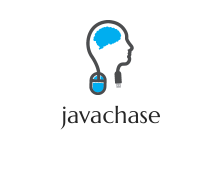Microsoft has released Office 2013 and Office 365 Home Premium officially, meaning it is now available to everyone around the world who wants to buy them. Since this is a major revamp of the previous Office lineup with an entirely segment (Office 365) coming to picture, it’s only logical to expect that there would be some confusion among consumers as to the differences between the products and which one should they go for. This post is an attempt to clear the air.
To begin with, Office 2013 is the standalone version of Office, just like Office 2010 and 2007 versions were. You can buy the license, and download and use it. Simple.
Office 365 Home Premium on the other hand is the cloud sister of Office 2013. It’s a subscription based service that not only has all the Office apps (Word, Excel, PowerPoint and more) but also connects them to the cloud through SkyDrive and Skype. It can work across five devices for a single license, which is a monthly fee that we will reveal in a bit.
Describing Office 365, Steve Ballmer said, “This is
so much more than just another release of Office. This is Office
reinvented as a consumer cloud service with all the full-featured Office
applications people know and love, together with impressive new cloud
and social benefits.”
Let us take note of and learn the key differences. These will indeed
answer many questions that you may have regarding the software and/or
the service.License and Pricing
Office 365 changes the concept of buy and install once. It will be available as a subscription product at the rate of $99.99 per year (Home Premium edition). The good thing is that the license is designed as a family product and you will be able to install it on up to 5 devices.Office 2013 comes with a perpetual license and is priced starting at $139.99 for Home & Student edition. It goes up to $399.99 for Office Professional. The product is as standalone as the previous versions and can be installed on a single device.
Package Inclusions
The Office 2013 suite will depend on the product edition you choose to buy. The install will range among tools that include Word, Excel, PowerPoint, OneNote, Outlook and more.Office 365 will contain the list from Office Professional with other advantages like *Office on Demand, 20 GB of additional SkyDrive storage and 60 minutes of Skype world minutes per month. The best part is that it upgrades to the latest as long as you keep paying your subscriptions. So, you do not have to wait for the new versions. The change is almost always there.
*Office on Demand: The concept is that you can get a full version software streamed to your computer if you need it.
Online or Cloud Connectivity
With Office 2013 you can synchronize settings across devices by associating the product with your Microsoft/Outlook account. Nevertheless, you can always save your files on the cloud and access them or work on them (SkyDrive) on the fly.Office 365 more of an online service. The catch is that you will be forced to save your files to SkyDrive which will then sync to the connected machines.
Note: When your subscription expires you will get some grace period to get it renewed or take a backup of all your documents.
Conclusion
So, before you decide and choose one among the two you will have to give a thought over the pricing and subscription schemes. You will need to conquer your thoughts and needs of a standalone product or the more connected one with multiple licenses as a single subscription. Keep in mind though that Microsoft has made it clear that Office 365 is the future. It will deliver updates to the cloud version first meaning Office 2013 users will have a longer wait when it comes to new features and updates.Which one will you choose?

No comments:
Post a Comment